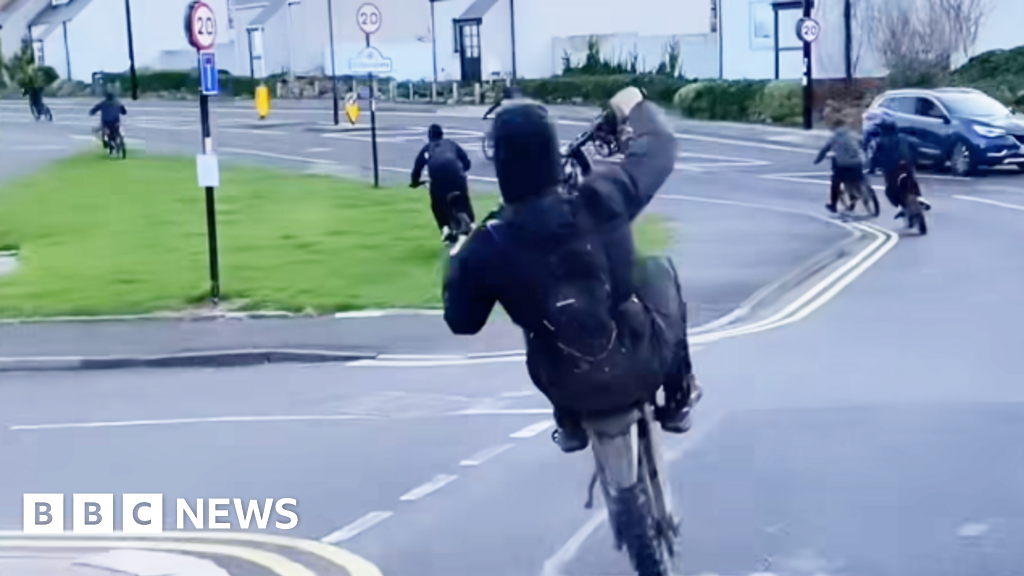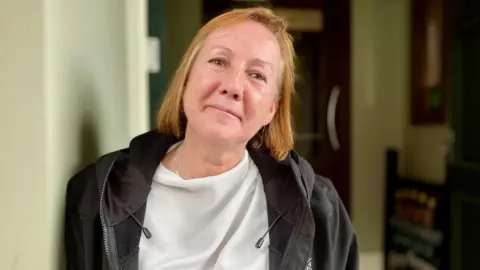2.7K
By Sue Wilson (Special Guest Writer for Project Censored’s Dispatches on Media and Politics)
THE AIR BELONGS TO US – But they’re trying to take it away
Media. Everybody is screaming about the media. Who we love, who we hate, who owns it, who uses it fairly, who outright lies to pander to audiences. Sometimes it feels like the media owns us. Still, there is a part of media that We the People actually own—broadcasting.
Say what? We own broadcast media? Yes, we do. But, about 450 pages of documents recently released under the Freedom of Information Act prove that forces within the Federal Government itself are blocking our right, as the lawful owners of the “Public Airwaves,” to reputable information.
This is important because our local news landscapes are turning into news deserts. Newspapers are closing; online news proliferates, but trends toward national, not local coverage.
Still, anyone with enough capital can start a news organization. Rent an office, hire a reporting and editing staff, get those presses rolling or post online, and sell advertising. You technically could have one local newspaper in your town, or you could have fifty. You may need more money than God, but by God, you can do it. (Think of the far-right Epoch Times, which John Tang started out of his basement.)
Broadcasting is the opposite. One TV market (which could encompass several towns) has only a few TV and radio stations because TV and radio physically broadcast signals over our air. And there are only so many frequencies available in our air (the same air we all breathe). Congress enacted laws establishing that We the People are the legal owners of those airwaves.
In the earliest days, one frequency would bump up against another, causing interference with others’ signals. (We experience that when driving across the country and suddenly hearing our radio change to a different station.) To prevent chaos in the fledgling industry, Congress and broadcasters created the Radio Act of 1927 to ensure all station signals had specific boundaries in pre-approved coverage areas. And since the airwaves belong to the public, they decided those frequencies must be licensed for use by broadcasters. This early Act also required that license holders must consider “public interest, convenience, or necessity” in broadcasting decisions.
These license holders incorrectly call themselves “broadcast owners.” The only thing they own are the buildings and equipment needed to physically broadcast over our air. Much as we are licensed to drive on our public highways, broadcasters are licensed to broadcast over our public airwaves. Just as we must follow the rules of the road or risk losing our driver’s licenses, broadcasters must follow the Federal Communications Commission’s rules of the road or risk losing their broadcast licenses.
At least, that’s the way it’s supposed to work.
In 1934, Congress passed the Communications Act (since updated by the Telecommunications Act of 1996). This Act established the Federal Communications Commission (FCC) to create and enforce rules for how broadcasters must operate under their licenses. The President appoints five Commissioners to head the FCC. They vote on which general rules are to be in place, while Bureaus within the FCC work directly with broadcasters on the details.
Beyond the aforementioned “public interest” standard, the law requires that broadcasters have sufficient character to hold a license to broadcast: If a broadcaster displays unethical character, it can lose its license to broadcast. Federal Law constrains the informational control of any one broadcaster by limiting one broadcast company to reach no more than 39 percent of the nation’s local TV viewing audience with its stations.
Public Interest. Character. Control. The three key license requirements of any radio or TV broadcaster.
BROADCASTERS TO FCC: We don’t need no stinkin’ rules!
The broadcast industry originally worked with the government to limit the power of local broadcasters. During World War II, the United States not only battled fascism but also confronted broadcast propaganda such as “Tokyo Rose” intended to demoralize troops and their families. Following the war’s conclusion, the nation as a whole made protecting trustworthy information a priority.
Over time, broadcasters started looking for a way to skirt those constraints. They sold the FCC on a scheme to allow one larger broadcast company to run substantial functions of two or more other local TV stations in the same town—stations licensed to entirely different companies. The National Association of Broadcasters (NAB) and other broadcasters insisted these “Shared Service Agreements” (SSAs) and “Joint Sales Agreements” (JSAs) would streamline operations, enabling broadcasters to do a better job of serving the public.
FCC legal expert Steve Lovelady says the (FCC) staff’s benchmark in dealing with SSAs and JSAs and other questions of broadcast licenseship consists of three basic elements: Every licensee must control station programming, financing, and personnel.
But broadcast giants do run two, three, even four stations in the same town, often providing the same news across all its stations.
How did we get to this point? According to a knowledgeable industry source, in the late 1980s, a small minority of broadcast industry executives met with the FCC’s Roy Stewart, chief of what was then called the Mass Media Bureau. He would decide which companies would receive broadcast licenses and which would not.
There was controversy over the true intent of SSAs and JSAs. Some industry insiders thought they were tricks to allow giant broadcasters to circumvent the law limiting how much of the nation’s audience one broadcaster could reach, and that FCC bureaus were making a mockery of the FCC’s rules of the road. There were industry meetings with Stewart requesting him to either enforce its rules or ask the full Commission to formally change them, but not pretend these new shared service arrangements really were in line with existing policy. Stewart didn’t listen, so JSAs and SSAs became the ever-expanding industry norm.
PARTY ON – Behind the scenes with broadcasters and their regulators
As part of his official duty, Stewart became a regular featured speaker at NAB shows and state broadcasters’ conventions. He’d tell broadcasters how to comply with FCC rules, then they’d go back to him for approval. In his unique position, he was lavished with lunches, dinners, drinks, and parties, from Las Vegas to the coveted Washington, DC, social scene. The industry held celebrations in his honor. “Roy, as gruff as he tried to be, really did define the ‘accessible regulator,’” said Jerry Fritz, former general counsel for Allbritton Communications, “He had an uncanny understanding of what was politically possible and had an open ear to be persuaded.”
(Tough to give up that kind of lifestyle just for FCC rules to protect the public interest.)
To be clear, Stewart did nothing nefarious. So what if bureau chiefs and industry leaders become great friends? So what if the bureau chief who decides who gets broadcast licenses goes and awards them to his drinking buddy from the convention? That’s the way Washington works— or doesn’t work—for the public interest. Small citizen groups aren’t invited to the party, so they are virtually invisible. This explains why citizen groups are practically ignored by the FCC Media Bureau, which often simply “loses” their filings.
Stewart retired in 2009 and has long since passed; others have filled his shoes. But his legacy continues: The FCC now doesn’t even have written rules to enforce. FCC legal expert Steve Lovelady writes, “…allowable parameters for SSAs and JSAs have been disclosed during private conversations with the FCC’s staff ….Since a number of the Division’s (not to mention the Commission’s) policies aren’t written down anywhere, they can change from one day to the next and from one deal to the next.”
DIFFERENT STROKES FOR DIFFERENT FOLKS — Especially Sinclair
This is a classic case of “Regulatory Capture.” That term applies to agencies that are so beholden to the entities they are supposed to oversee that they can’t regulate them at all. On an FCC policy level, close industry relationships result in rules that clearly favor giant broadcasters over small ones. But there is one broadcaster in particular that gets special treatment. According to FCC legal expert Art Belendiuk, “The FCC has one set of rules for Sinclair, and another set of rules for every other broadcaster.”
On its website, Sinclair admits it owns licenses to 134 TV stations and has shared service agreements with another 47 TV stations licensed to others. In total, it has stations in more than 85 TV markets. That’s a lot of reach – especially when FCC rules used to allow one company to have only seven TV stations nationwide.
Many recall that Sinclair, owned by the Smith family and headed by David Smith, has been repeatedly caught using its stations to promote its politics. In 2017, while it was in a $3.9 billion merger discussion with Tribune Broadcasting, Sinclair told its unwilling local news producers they “must run” right-leaning editorials featuring Boris Epshteyn, an advisor to President Trump.
That same year, Sinclair started running paid advertisements disguised as legitimate news stories inside its news shows. That time, the FCC fined the broadcast giant $13.4 million.
That didn’t stop Sinclair in 2018 from forcing all its local news anchors to read a script on the air telling viewers Sinclair was the trusted voice of facts (see a compilation here). President Trump defended Sinclair. A group of US Senators complained, “We call on the FCC to investigate whether Sinclair’s production of distorted news reports fails the public interest test.” FCC Chair Ajit Pai declined to do so.
MASQUERADE BALL – They’re not who they say they are
Over time, Sinclair set up front companies, primarily Cunningham Broadcasting and Deerfield Media, to acquire broadcast licenses in towns where Sinclair already had a TV (usually network) station. Sinclair makes SSA and JSA deals with its own front companies so it can control two, three, or even four stations in the same community. Add them up and nationally Sinclair is controlling way more stations — and information — than the law allows.
Sinclair deserves to lose many if not all its broadcast licenses, but the only way to achieve that is for local TV viewers to challenge those licenses. On behalf of local viewer Ihor Gawdiak, Art Belendiuk filed a 2020 Petition to Deny (PtD) the broadcast license in Baltimore, the city of Sinclair’s corporate home. From my 2020 piece at BradBlog:
Under the law, a single TV company is permitted to reach no more than 39% of viewers in the United States overall. In a single local broadcast market, one company may apply to own two stations — if there are nine or more stations in that market. Baltimore has just eight stations, and three of them are actually owned by Sinclair: WBFF, WNUV, and WUTB.
Sinclair lawyers (who also represent Cunningham Broadcasting and Deerfield Media) will say Sinclair owns WBFF, Cunningham owns WNUV and Deerfield owns WUTB. But, in a September 1 legal Petition to Deny the renewal of all three stations’ licenses, due to both the shell game and the lies Sinclair has told to protect its unlawful ownership, Republican attorney Art Belendiuk researched Securities and Exchange Commission (SEC) documents to prove that both Deerfield and Cunningham are actually both controlled by Sinclair.
Control is the big issue here. As my 2020 BradBlog article continued:
On page 13 of the Petition, Belendiuk lists the criteria the FCC considers to determine who would actually control the Cunningham and Deerfield stations:
- Who controls daily operations (Sinclair);
- Who carries out policy decisions (Sinclair);
- Who is in charge of employment, supervision and dismissal of personnel (Sinclair);
- Who is in charge of paying financial obligations, including operating expenses
- (Sinclair);
- Who receives monies and/or profits from the operation of the station (Sinclair).
What has the FCC done with this Petition to Deny Sinclair’s licenses? Nothing. It’s been three years and counting.
THE MAN BEHIND THE CURTAIN – How far will he pull it back? Not too far
In 2017, predating Belendiuk’s petition, Sinclair entered into a $3.9 billion merger agreement with Tribune Broadcasting to acquire broadcast licenses held by Tribune Broadcasting. President Trump backed the deal. Sinclair filed the requisite paperwork including proposed JSA and SSA agreements. According to Variety, this would have resulted in Sinclair having operational control over stations available in 72 percent of all households with a TV set in the United States.
In July 2018, to the surprise of all, the FCC’s chair, Republican Ajit Pai, issued a remarkable “Hearing Designation Order”(HDO) to challenge not only Sinclair’s proposed merger with Tribune, but the very character of Sinclair Broadcasting itself. This hearing, to be held in front of an administrative law judge and in full view of the public, was to determine whether Sinclair was playing a shell game with its JSAs and SSAs. Was it trying to control more TV stations nationwide than the law allows, and was Sinclair lying about that game to the Commission itself?
Whoa. A public hearing. One would inquire why a car dealer friend of principal David Smith, who had zero experience in broadcasting, sought to control and run Superstation WGN. A hearing where private backroom bureau buddy-buddy deals could not be made. One where Sinclair skeptics across the country could learn exactly what Sinclair has been doing — and one where journalists would be free to cover any resulting revelations. One where Sinclair could lose all its broadcast licenses. The fate of Sinclair Broadcasting itself was on the line.
What were the charges in the HDO?
– Whether, in light of the issues presented above, Sinclair was the real party-in-interest to the WGN-TV, KDAF, and KIAH applications, and, if so, whether Sinclair engaged in misrepresentation and/or lack of candor in its applications with the Commission;
– Whether consummation of the overall transaction would violate Section 73.3555 of the Commission’s rules, the broadcast ownership rules; and
– Whether, in light of the evidence adduced on the issues presented, grant of the above-captioned applications would serve the public interest, convenience, and/or necessity, as required by Sections 309(a) and 310(d) of the Act.
According to the HDO, Sinclair made it look as though it was transferring licenses to operate TV stations to other owners, when in fact it had those owners under its full control, and then misled the FCC about it. Lying to the FCC about how many stations the corporation would actually have controlled goes directly to the character requirement of licensees. It could result in the dismissal of all Sinclair’s licenses.
Administrative Law Judge Jane Halprin was tapped to hear the case.
Just a month later, Tribune scuttled its multi-billion dollar deal. Sinclair didn’t fight for it; better losing a deal than revealing it doesn’t have the character qualifications to own any broadcast licenses.
In March 2019, a fuming Judge Halprin dismissed the ordered hearing but clearly wanted these issues adjudicated in public. “Allegations that Sinclair engaged in misrepresentation and/or lacked candor before the Commission are extremely serious charges that reasonably warrant a thorough examination, notwithstanding the decision to discontinue the transaction… Certainly, the behavior of a multiple station owner before the Commission may be so fundamental to a licensee’s operation that it is relevant to its qualifications to hold any station license.”
She further suggested adjudication in public, such as “future proceeding in which Sinclair is seeking Commission approval, for example, involving an application for a license assignment, transfer, or renewal.” (The Baltimore PtD would be such a proceeding.)
“Once the FCC ordered a public hearing, it became subject to the Communications Act and needs to be public, as ordered. Holding a secret investigation is against the law,” Belendiuk says.
But the FCC Media Bureau did what it always does—it conducted private conversations with Sinclair’s representatives to settle the matter. A former FCC Commissioner tells me that Ajit Pai stuck his neck out far enough by scuttling the merger, but didn’t want to actually sink Sinclair. Belendiuk cites the Bureau’s desire to support then-President Trump.
In May 2020, the FCC Media Bureau published a “Consent Decree” (fancy word for a fine)— this one for $48 million (for the $4.5 billion Fortune 500 corporation). But the $48 million fine actually included the 2017 $13.4 million fine imposed on the broadcaster for masquerading as content as news. Sinclair had never paid the prior fine, so the FCC rolled the sum together.
And as noted in the HDO, in 2001, the FCC fined Sinclair $40,000 for essentially playing the same shell game it had then been found to be doing again; the FCC then noted it would give “appropriate consideration” to any further evidence of control by Sinclair should it be provided in future proceedings.
Right.
THE BIG REVEAL – What the FCC and Sinclair didn’t want us to know
What really happened in the Media Bureau’s backroom investigation? There was only one way to find out. On October 28, 2020, through Belendiuk, I filed a Freedom of Information Act Request (FOIA) with the FCC, demanding to see:
All documents or filings Sinclair submitted to the FCC or its Bureaus, (as referenced in the Consent Decree paragraph 7), on July 31, 2018, May 2, 2019, July 12, 2019 and August 6, 2019, and any supplements thereto.
The FCC did not respond. So, in April 2021, Belendiuk filed a Complaint with the US District Court of Appeals for the DC Circuit to obtain the required documents. That shook the FCC out of its slumber enough for them to respond to us. They sent a few files that were already on the public record.
The Commission likely thought we would just go away, but instead, we litigated for years.
In February 2023, the FCC finally released to us about 450 pages of documentation of its backroom deal with Sinclair. For comparison, in another of Belendiuk’s cases, a fledgling operator, Auburn Network Inc., sought to obtain a small AM and FM station and a couple of translators. The FCC compelled Auburn to produce 16,000 pages of supporting documents. By contrast, the FCC was satisfied with the mere 450 pages Sinclair produced, and those were of its own choosing.
Most telling is Sinclair’s response to the FCC’s Letter of Inquiry (LOI). Large, publicly traded corporations are required to keep detailed financial records; Sinclair did provide the FCC with financial information. However, none of those records met “generally accepted accounting principles” (GAAP) standards.
Per Investopedia.com: “The generally accepted accounting principles (GAAP) are a set of accounting rules, standards, and procedures issued and frequently revised by the Financial Accounting Standards Board (FASB). Public companies in the US must follow GAAP when their accountants compile their financial statements. GAAP is also widely used in governmental accounting.” Tribune did provide GAAP financials to Sinclair, but none of those documents were provided to the FCC, nor did the FCC bother to ask for them.
Instead, Sinclair provided what’s called “Broadcast Cash Flow” (BCF). Not an appraisal, BCF is more of a guess as to what will happen in the future. BCFs are “financial measures that are not recognized under GAAP.” According to Belendiuk,
BCF allows parties to make assumptions that can significantly increase or decrease cash flow and thus a station’s value. A party looking to game the system could make any number of assumptions that would materially alter the financials — making them unreliable.
Did Sinclair provide audited financial records? It did not. Did it provide a profit and loss statement? It did not. Did it provide any verifiable financial data? It did not. What Sinclair provided was its estimate of BCF, based on no verifiable information which it then used to justify the proposed purchase price. Yet the FCC did not question Sinclair’s voodoo financing.
The FCC asked whether appraisals of the stations were done; Sinclair said no, writing it “believes such practice is not common in the industry.” (Funny, the FCC asked about appraisals when apparently requiring appraisals is not standard Bureau practice.) There are twelve other similar Sinclair responses using language like, “Sinclair believes that such agreements had terms materially similar to agreements previously used in connection with similar transactions approved by the FCC for Sinclair and other broadcasters.” In other words, Sinclair told its regulator in so many words, “You always let us do it before.”
The FCC did ask about the qualifications of Sinclair CEO David Smith’s buddy and business associate, car dealer Steven Fader, who through his new entity WGN-TV would be running the entire WGN Superstation empire. Sinclair painted a picture of a competent businessman who’d done many business deals with David Smith. But the question the FCC did not ask is how a car dealer with zero broadcast experience is competent to program and run one of the largest and most unique TV stations in the country. Sinclair insists that Fader would have complete control of this $300 million Television station, yet he appeared to be wholly unqualified to operate it. (So who would?)
The HDO specifically asked about Sinclair valuing WGN at a mere $60 million. Sinclair answered that the $60 million represented 20 percent of WGN’s price, with Fader’s WGN-TV LLC owning 20 percent of the assets, and Sinclair 80 percent (in keeping with the formula in Lovelady’s piece.) Even that figure is considered low for WGN.
What’s even more telling is what the FCC did not ask. In 2018, Newsmax Media Inc. filed a PtD to prevent the Tribune merger, citing:
Each divestiture includes a provision allowing Sinclair to reacquire the stations at a substantially similar price for a period of up to 48 years. And while Sinclair can freely assign its option rights, the grantors (Cunningham and WGN TV LLC) need Sinclair’s consent to assign their option rights.
Moreover, Sinclair’s option survives assignment of the assets or a merger or consolidation of the grantees. No arms-length transaction would provide the seller an option to buy back the sold assets, at a substantially similar price, for nearly half a century. This illustrates that the divestitures are sham transactions in which Cunningham and WGN TV LLC are merely warehouses for licenses Sinclair is not legally able to own.
The 48-year option period is standard practice in Sinclair’s deals with its front companies but is really an option in perpetuity. “If near the end of the 48-year period the nominal licensee refuses to renew the option, Sinclair can exercise the option and put in another front for another 48 years. For reasons I can’t explain, the FCC has no problem with this arrangement,” says Belendiuk.
The FCC did ask whether Sinclair would have a role in the operations of stations KDAF and KIAH to be purchased by front company Cunningham. Sinclair said no. But as Belendiuk pointed out upon filing his Petition to Deny Sinclair’s licenses of the Baltimore stations, “Sinclair sets Cunningham’s budget. The salary of Michael Anderson, Cunningham’s sole voting shareholder and presumably the person in charge, is set by Sinclair. If Anderson steps out of line, Sinclair has the power to buy him out for a pittance and replace him with whomever they choose.” (See more details here.)
IT AIN’T OVER UNTIL IT’S OVER – It’s time for a reckoning
A reckoning of these shell games should have come out in a public hearing, and it still must. But the FCC has sat on the illuminating Baltimore PtD for more than three years. It is time for the Commission to designate a hearing on that SEC research-backed petition and take this critically important Public Interest case out of the backroom and into the sunlight.
Current FCC Chair Jessica Rosenworcel voted against the Sinclair Consent Decree, writing “In this consent decree the Federal Communications Commission ignores its rules and bends the facts in order to assist Sinclair Broadcast Group with sweeping its past digressions under the rug. For this reason, I dissent.” She has the power to call the hearing.
This becomes even more critical when we realize that, on January 15, 2024, Sinclair’s David Smith bought the Baltimore Sun. That gives him control of three of eight local TV stations in Baltimore, plus the major local newspaper. There used to be FCC rules against that.
But that’s a story for another day.
Sue Wilson is an APTRA, RTNDA, PRNDI, and Emmy Award-winning broadcast journalist now working to hold the US government and corporate media accountable for their corrosive effects on democracy. She is the Writer/Producer/Director of the award-winning Public Interest Pictures’ documentary on the media, Broadcast Blues, and reveals the structural schisms in corporate media at Sue Wilson Reports.
She heads the Media Action Center which forced Entercom to surrender its $13.5 million broadcast license for its 2007 killing of Jennifer Strange in an on-air contest. She filed an Amicus Brief in the Supreme Court case FCC v Prometheus Radio, excerpts of which are included in her Comments to the FCC Quadrennial Review.





















































































































































You must be logged in to post a comment Login